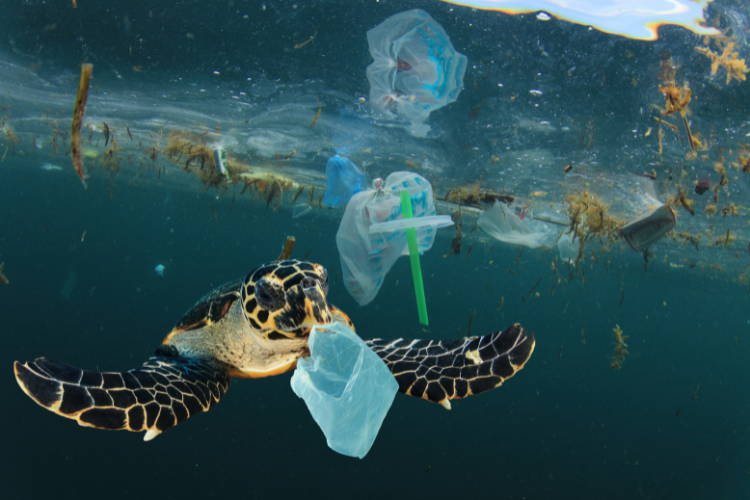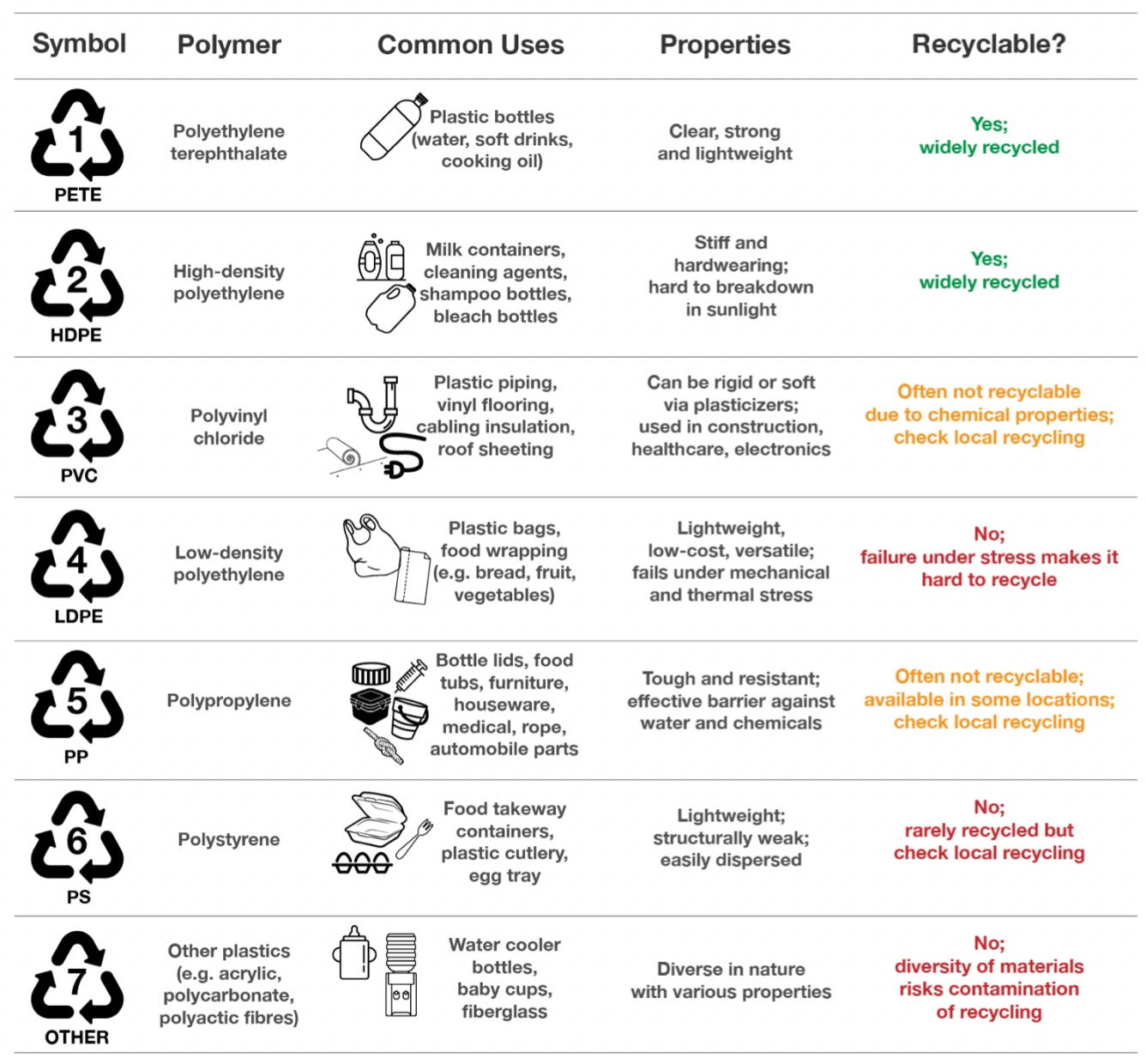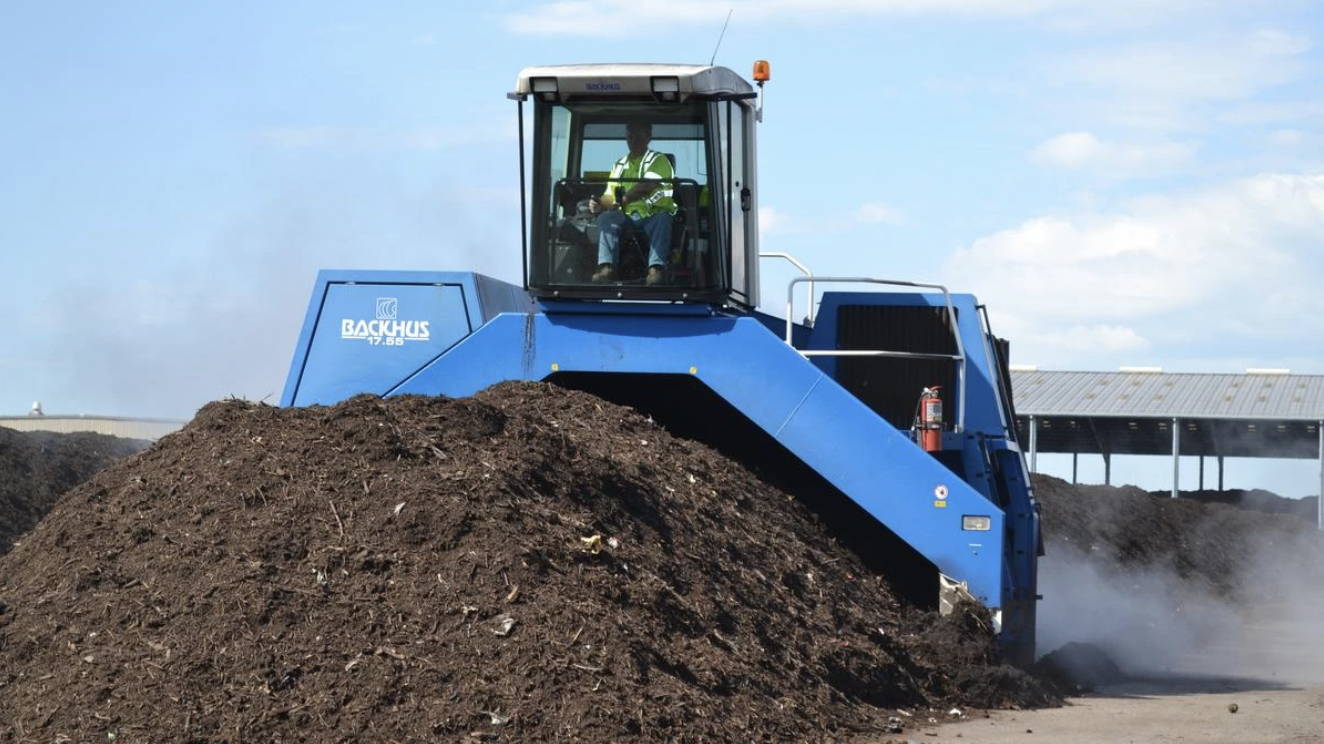Let's Talk Plastic.
If you haven't noticed, we love the ocean and the planet for that matter. We get pumped just thinking about all the amazing places to see and the experiences nature has to offer!
That being said, we want to do our part to help reduce our impact when it comes to waste, especially plastic waste, while also making sure our amazing products get to you safely sealed and kept fresh.
We've weighed the options, even agonized over them, and consulted with a lot of experts. It was eye-opening, so if you care about the planet too, keep reading, you might be surprised when you learn the truth about some of the "eco-friendly" options out there!

Recycling
The Environmental Protection Agency estimates that only 8% of plastic was recycled in the USA in 2018 and that number is even lower worldwide.
Some types of plastic can't be recycled at all while others require special machinery to be recycled. Most people don't know what's recyclable, so a huge percentage of the stuff that ends up in the recycling bin just gets thrown into the trash anyways. On top of that, local waste management services dictate what's recyclable, so it's inconsistent and unreliable from area to area.
You can see why recycling isn't going to save the world anytime soon. Not that it's a bad thing, we should all try to recycle, but it's just not the silver bullet people want it to be.
Check out the figure below to learn more about the 7 types of plastic.

Compostable, Biodegradable, & BioPlastics
The terms above all loosely refer to the idea that something could break down into organic matter leaving zero waste. It sounds amazing on the surface but there are major limitations.
A common misconception is that compostable packaging will eventually breakdown, similar to a banana peel or an apple core but unfortunately, that's not the case. Most compostable items have to be sent to commercial composting facilities where they go through an intense process lasting a few months before they finally break down.
In other words, don't leave your compostable forks and knives at the beach thinking they'll breakdown, they won't.
If all compostable packaging did end up in a commercial facility, it could be a decent solution, but the infrastructure is lacking big time. As of 2022, very few US cities provide waste bins for commercial composting and in public areas, it's rare to see a composting bin next to the trash and recycling bins so most compostable items just go to the landfills where they last nearly as long as regular plastic.
Another limitation lies in the intense energy usage of commercial composting facilities which poses other environmental issues.
Compostable consumer packaging could be a good option in the future but making sure the waste ends up in a commercial composting facility where it can actually get turned back in organic matter is still a huge challenge.

PCR Packaging (Post-Consumer Recycled)
Post-consumer recycled packaging is at least partially made from plastic and other materials that have been recycled already.
The advantage to post-consumer recycled packaging is that the brand (HydroSwell in this case) doesn't depend entirely on the end-user to make sure packaging waste is recycled or composted. Instead, the brand can ensure that their packaging materials have been recycled at least once beforehand and then encourage the end-user to recycle the packaging again if that's possible or dispose of the packaging responsibly.
Post-Consumer Recycled materials also typically offer a food-safe barrier equal to virgin plastic (plastic that's newly created) so it's dependable to keep food products fresh.
Now for the downside. Post-consumer recycled materials aren't always recyclable again. Plastic breaks down as it gets recycled and used and eventually, it will reach the end of its useful life and will need to be discarded in the trash.
Other times companies will say their stuff is post-consumer recycled when the recycled materials only make up a few percent of the package. Sure it's better than nothing, but if the company isn't upfront about the extent to which their things are post-consumer recycled, it can be a form of greenwashing (when companies make their stuff seem eco-friendly in a misleading way).

And the Winner is...
If you've read this far, you realize that there isn't an obvious winner. It all depends on the situation and each has its benefits.
For HydroSwell, we chose to go the Post-Consumer Recycled packaging route. We considered a recyclable packaging option, but it had to be processed using specific machinery and wasn't accepted via home recycling bins. The only way to make sure it got recycled was to drop it off at local facilities if they existed. We figured most customers wouldn't put forth the effort and we don't blame them!
With post-consumer recycled packaging we had peace of mind knowing that before the packaging ever reaches the end-user, it's already made from recycled materials.
Our ProLoco pouches are made from 70% post-consumer recycled materials and our scoops are made from 100% recyclable materials!
The downside is that our pouches are not recyclable again so just make sure to place them in the garbage. Our scoops on the other hand are made from more durable plastic and are basically infinitely recyclable, so make sure to toss the scoop into your home recycle bin!
It's not a perfect solution and we know it...
We are always looking for ways to reduce our company's impact on the environment and on top of looking for the most environmentally friendly packaging options out there, we have some exciting projects in the works involving ocean clean-up initiatives.
If you're familiar with any eco-friendly options you think we should consider, we'd be happy to hear from you!
Email us at info@hydroswell.com

